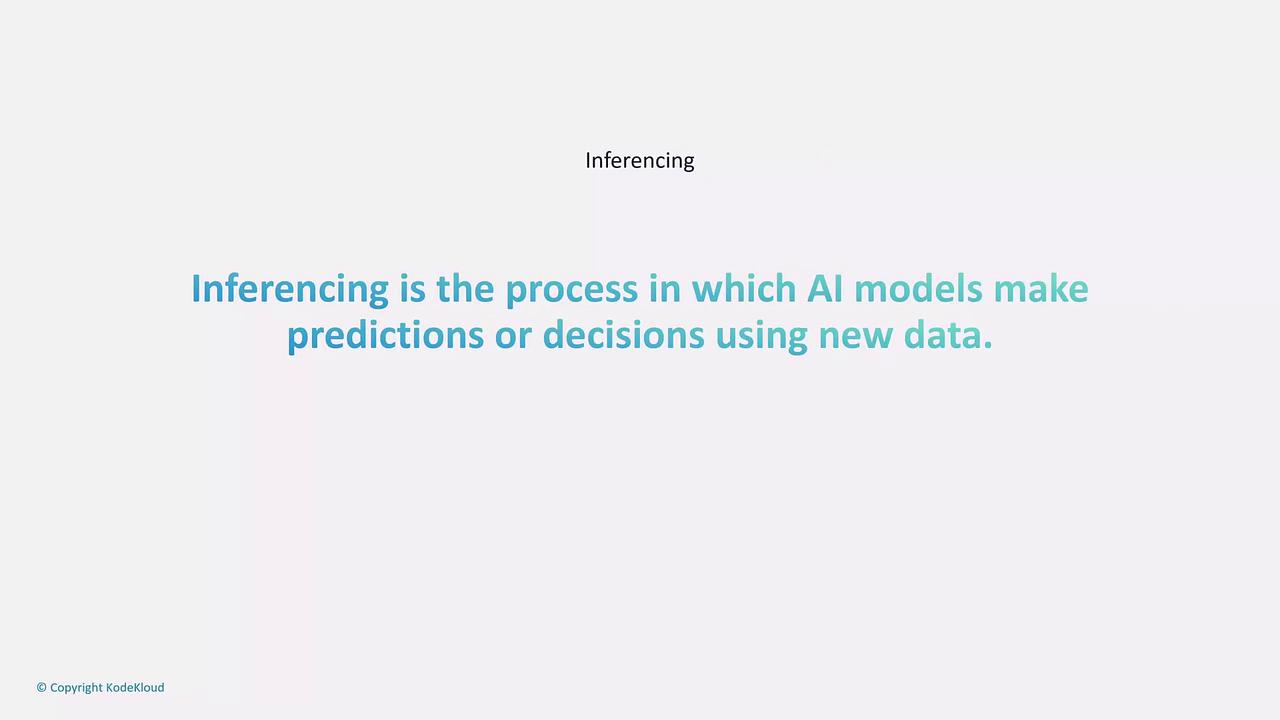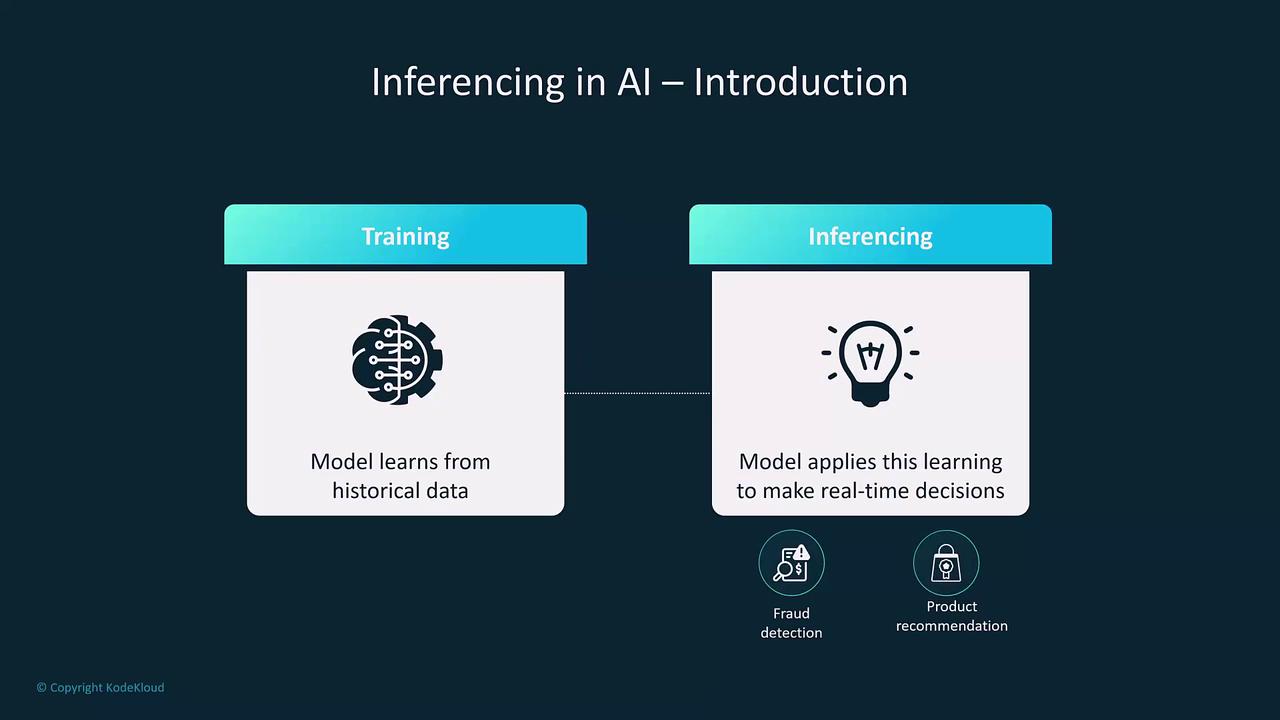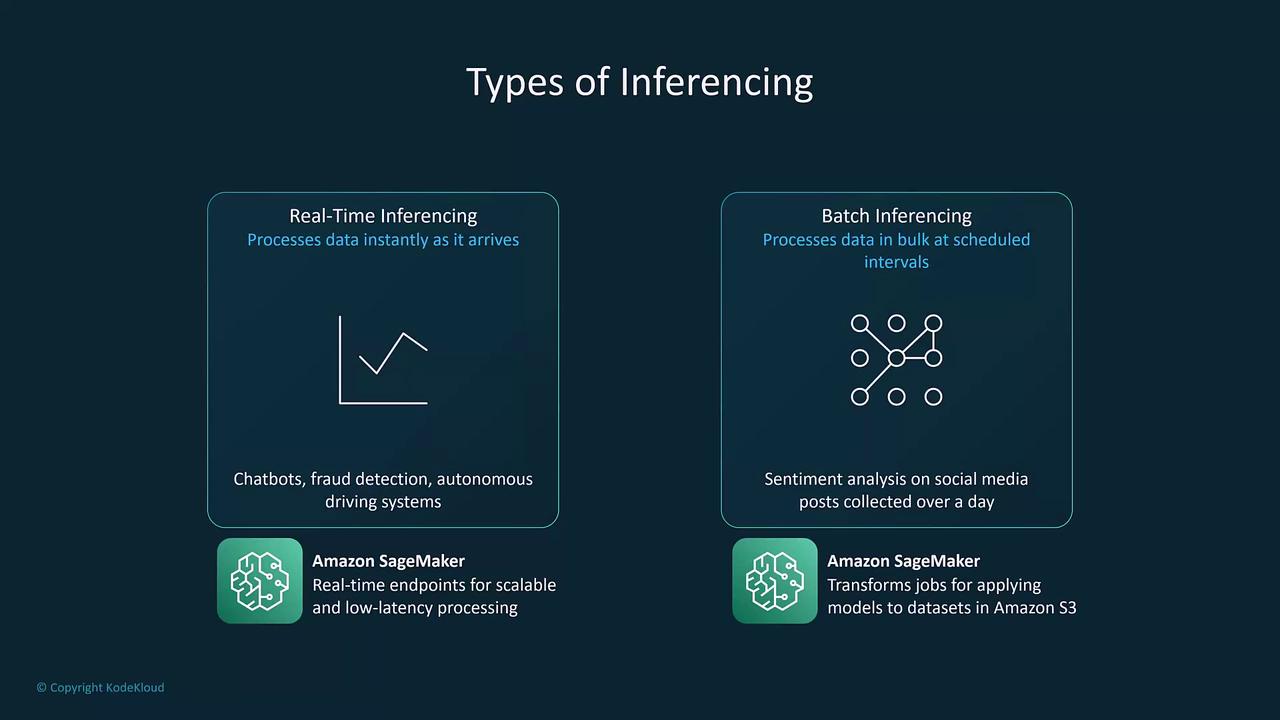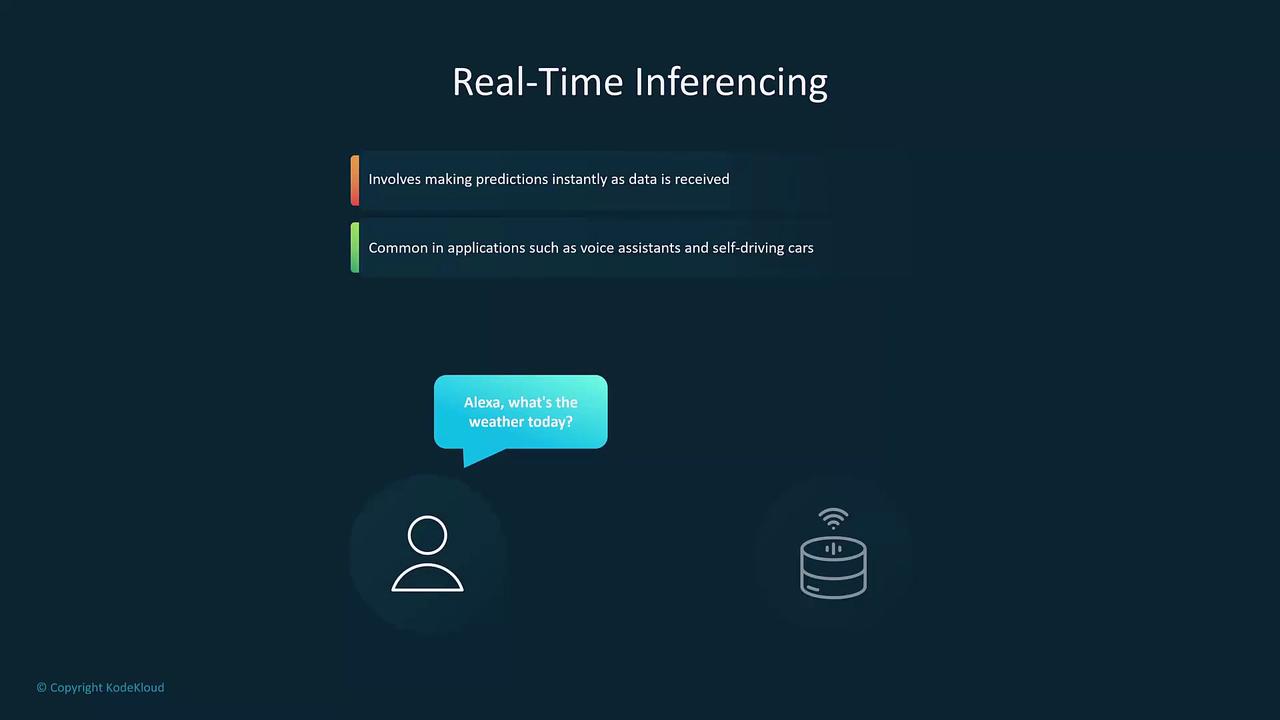AWS Certified AI Practitioner
Fundamentals of AI and ML
Types of Inferencing
Welcome back, students. Michael here.
In this article, we explore the various types of inferencing used in artificial intelligence (AI). Inferencing is the process of applying a trained AI model to new data in order to generate predictions or classifications. This allows the model to convert learned mathematical patterns into actionable insights—for example, classifying emails as spam, forecasting numerical trends, or detecting fraudulent activities.

After training, models can assess new inputs and produce probabilistic predictions. For instance, a spam filter trained on millions of emails will evaluate a new message and predict its likelihood of being spam. AI models find applications in numerous domains including fraud detection, product recommendation, and customer service automation.

Once a model reaches a sufficient level of accuracy, it is deployed into production environments to make reliable inferences. There are two primary categories of inferencing: real-time inferencing and batch inferencing.
Real-Time Inferencing
Real-time inferencing generates predictions or classifications instantly as data arrives. This approach is crucial for applications that demand immediate responses—such as chatbots, fraud detection systems, autonomous driving, and voice assistants like Alexa. As soon as an input is received, the model processes it immediately, ensuring prompt decision-making.
Amazon SageMaker is one example of a machine learning service that provides endpoints for deploying models capable of real-time inferencing. These endpoints are designed for high scalability and minimal latency.

Real-time inferencing is especially evident in voice assistants. For example, when you ask Alexa, "What's the weather today?", the system processes your query immediately and returns the current forecast.

Batch Inferencing
In contrast, batch inferencing handles large volumes of data by processing them collectively at scheduled intervals, rather than one record at a time. This method is best suited for scenarios where immediate responses are not required, but efficiency in processing extensive datasets is essential.
Batch inferencing proves ideal for tasks such as sentiment analysis on social media data accumulated over hours or days, stock market predictions, and customer segmentation. Amazon SageMaker also supports batch inferencing through its batch transform jobs, enabling users to process vast datasets collectively.
Note
Real-time inferencing is optimal for live applications requiring instant feedback, whereas batch inferencing is better suited for comprehensive analysis where time sensitivity is less critical.
Comparison of Real-Time and Batch Inferencing
| Category | Description | Use Cases |
|---|---|---|
| Real-Time Inferencing | Processes incoming data immediately, providing instant predictions. | Chatbots, fraud detection, autonomous driving, voice assistants |
| Batch Inferencing | Processes data in bulk at set intervals, ideal for extensive data analysis where immediate response is not necessary. | Sentiment analysis, stock market predictions, customer segmentation |
Thank you for reading this article. I look forward to exploring more topics with you in the next lesson.
Watch Video
Watch video content